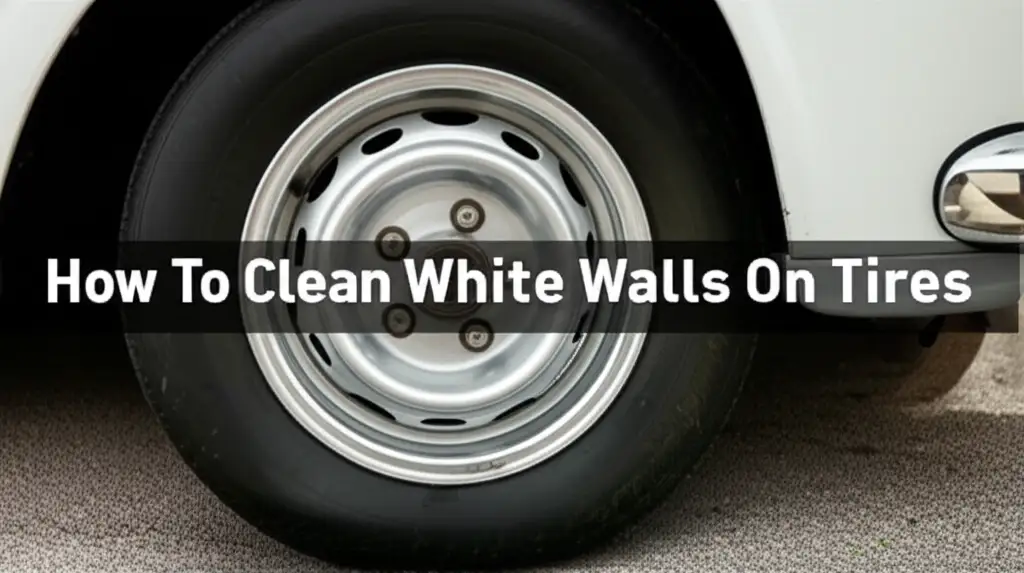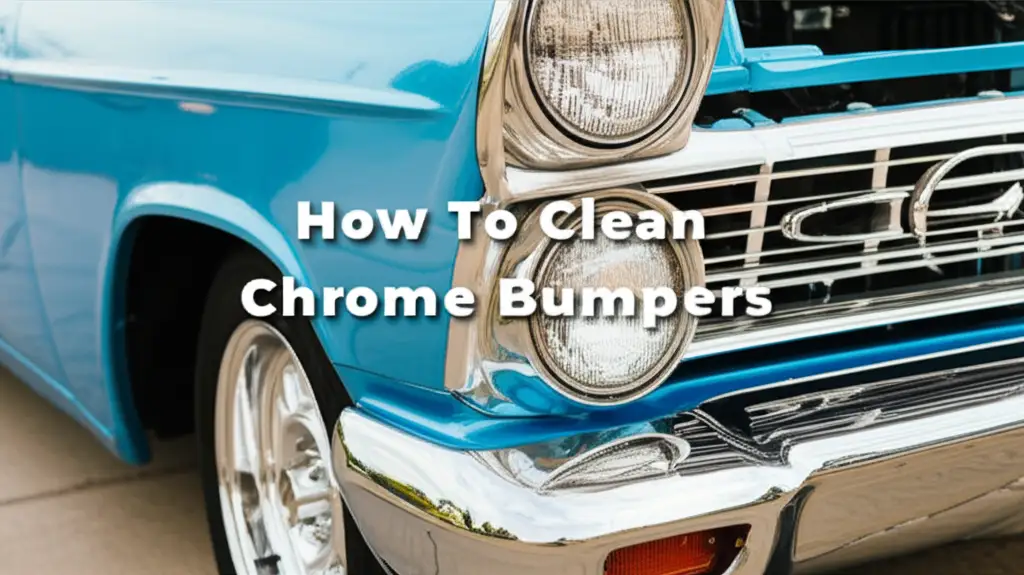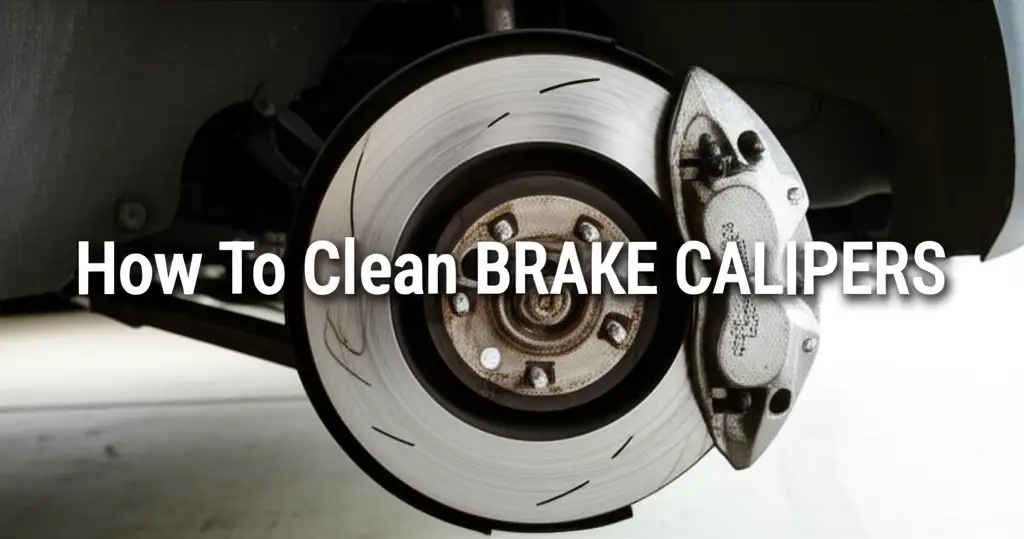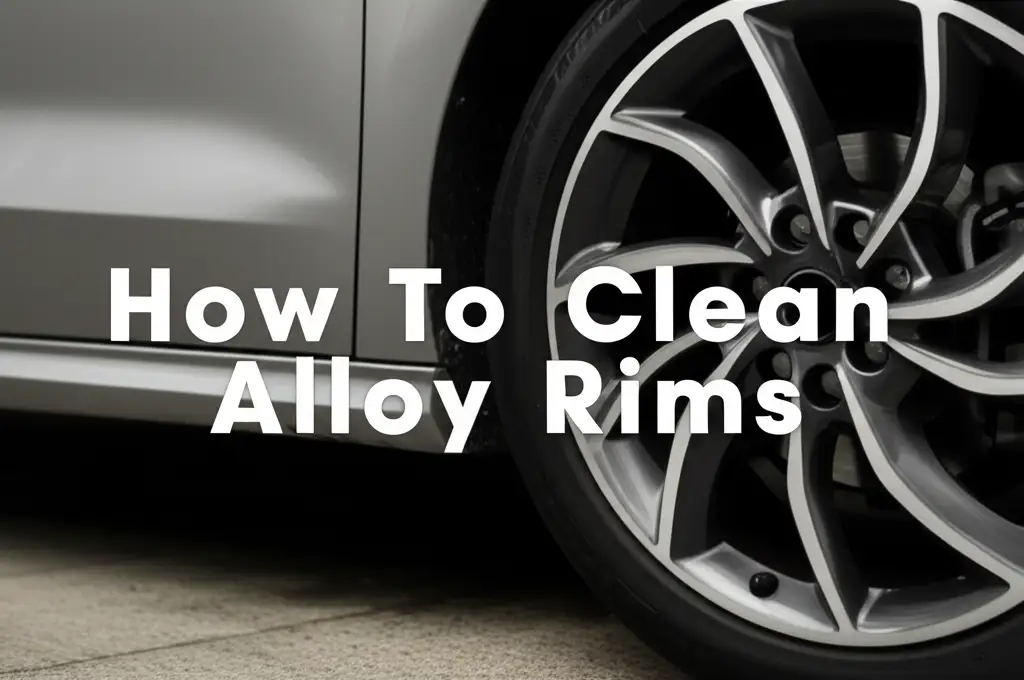· Auto Care · 15 min read
How To Clean Aluminum Rims With Household Products
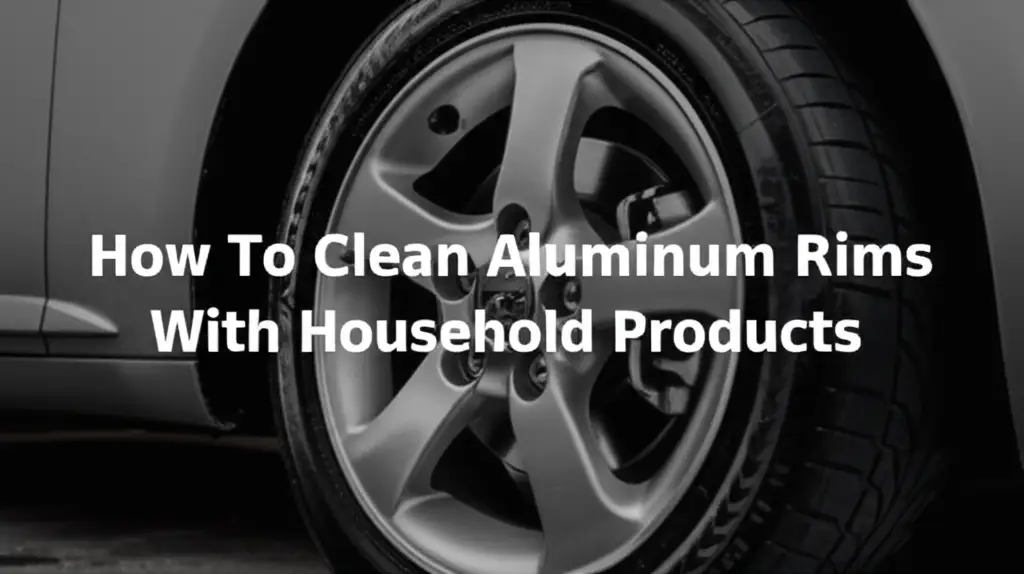
Shine Your Ride: How To Clean Aluminum Rims Effectively
Dirty rims can ruin a car’s appearance. Many people spend money on specialized cleaners. What if I told you that sparkling aluminum rims are possible with items already in your pantry? It’s true! You can use common household products to get fantastic results.
This guide will show you how to clean aluminum rims using simple, safe, and affordable solutions. We will cover preparation, different cleaning agents like vinegar, baking soda, and dish soap, and how to protect your rims after cleaning. Get ready to make your wheels look brand new without breaking the bank.
Takeaway
- Prep First: Always cool down rims and rinse them well before applying any cleaning solution.
- Vinegar Power: White vinegar effectively dissolves brake dust and grime due to its mild acidity.
- Baking Soda Paste: Use baking soda with dish soap to create a gentle abrasive paste for stubborn dirt.
- Lemon & Cream of Tartar: This mix tackles specific oxidation and light rust spots.
- Rinse Thoroughly: Always rinse completely to prevent water spots or residue buildup.
- Protect Afterward: Dry your rims well and consider applying a wax or sealant for lasting shine.
To clean aluminum rims with household products, you simply combine common items like white vinegar, baking soda, dish soap, or lemon juice with water. These mixtures effectively break down brake dust, road grime, and light oxidation. Apply the solution, scrub gently, and rinse thoroughly to restore shine.
Why Aluminum Rims Need Special Care
Aluminum rims enhance a vehicle’s look. They are lighter than steel wheels. However, aluminum is a soft metal. It reacts to elements like road salt, dirt, and brake dust. These elements cause corrosion and dullness. This requires careful cleaning.
Regular car washes often miss the deep cleaning rims need. Brake dust is particularly corrosive. It comes from the brake pads and rotors. This dust bakes onto the hot rim surface. Over time, it can pit and stain the aluminum permanently. Specialized cleaners can be expensive. Many contain harsh chemicals. These chemicals might damage the clear coat on your rims.
Household products offer a gentle alternative. They are less aggressive but still effective. This means you can clean your rims often without worry. They also save you money. You likely have these items at home already. This approach is good for the environment too. It reduces the use of harsh chemicals. Caring for your aluminum rims keeps them looking good. It also helps maintain their lifespan.
Essential Preparations Before Cleaning Aluminum Rims
Proper preparation is important for good cleaning results. It protects both you and your rims. Start by parking your car in a shaded area. This prevents cleaning solutions from drying too quickly. Hot rims can cause solutions to evaporate. This leaves residues or streaks. Let your rims cool completely before you begin.
Next, gather all your supplies. You will need a few buckets, a hose with good water pressure, soft brushes, and microfiber towels. Avoid using stiff brushes or abrasive sponges. These can scratch the delicate surface of aluminum. Wear gloves and eye protection. This protects your skin and eyes from cleaning solutions. Even natural products can irritate. Safety is always a priority.
Begin by rinsing each rim thoroughly with water. Use a strong stream from the hose. This removes loose dirt, dust, and debris. This initial rinse prevents scratching during the scrubbing phase. It also lets your cleaning solutions work more effectively. Pay attention to the inner barrel of the rim. Much of the brake dust collects there. A good rinse saves you effort later.
- Steps for Preparation:
- Park your car in a cool, shaded spot.
- Ensure rims are completely cool to the touch.
- Gather necessary tools:
- Two buckets (one for cleaning solution, one for rinse water)
- Garden hose with spray nozzle
- Soft-bristle wheel brushes (various sizes for spokes and crevices)
- Microfiber towels for drying
- Protective gloves and eyewear
- Rinse each rim thoroughly with water. Remove loose dirt and brake dust. Focus on spokes and the inner barrel. This prepares the surface for deeper cleaning.
The Power of Vinegar: A Natural Aluminum Rim Cleaner
White vinegar is a cleaning powerhouse. It works wonders on aluminum rims. Its acetic acid content helps dissolve brake dust, grime, and mineral deposits. This makes it a great choice for cutting through tough dirt. I often use vinegar around my home for various cleaning tasks. It’s effective and safe for many surfaces.
To use vinegar, first mix it with water. A 1:1 ratio of white vinegar to water is often effective. For very dirty rims, you can use a stronger solution. Some people even use full-strength vinegar on tough spots. Pour this mixture into a spray bottle for easy application. Spray a generous amount onto the entire rim surface. Let the solution sit for several minutes. This allows the acid to break down the grime.
After letting it sit, use a soft-bristle brush to scrub the rim. Work the solution into all the nooks and crannies. You will see the dirt loosening and running off. Rinse the rim thoroughly with clean water. Make sure no vinegar residue remains. Vinegar not only cleans but also leaves a streak-free shine. It is a fantastic natural option for maintaining your rims. This method is similar to how you might clean hard water stains from other surfaces. You can learn more about using vinegar for household cleaning here: how to clean hard water stains on shower glass.
- Vinegar Cleaning Method:
- Mix the Solution: Combine equal parts white vinegar and water in a spray bottle. For heavy grime, use a stronger vinegar concentration.
- Apply to Rims: Spray the entire rim surface, ensuring full coverage.
- Dwell Time: Let the vinegar solution sit on the rims for 5-10 minutes. This gives the acetic acid time to penetrate and loosen dirt.
- Agitate and Scrub: Use a soft-bristle brush or microfiber cloth. Gently scrub all parts of the rim, including spokes and lug nut areas. Focus on areas with visible brake dust.
- Rinse Thoroughly: Use a strong stream of clean water to rinse off all the vinegar solution and loosened grime. Ensure no residue remains.
- Dry: Immediately dry the rims with a clean microfiber towel to prevent water spots.
Baking Soda and Dish Soap: Gentle Abrasives for Your Rims
Baking soda is a mild abrasive and deodorizer. It works well as a cleaning agent. When combined with dish soap, it forms a powerful but gentle cleaner. Dish soap is excellent at cutting through grease and oily residue. Together, they tackle brake dust and road grime effectively. I often use this combination for tough kitchen messes, and it works similarly well for wheels.
To create this cleaning paste, mix a few tablespoons of baking soda with enough dish soap to form a thick paste. You can add a little water if needed to reach the right consistency. This paste should be thick enough to cling to the rim. Apply this paste directly to the dirty areas of your aluminum rims. You can use a sponge or a soft brush.
Gently scrub the applied areas. The baking soda provides a light abrasive action. This helps lift away stuck-on dirt without scratching the surface. The dish soap works to break down grease and oils. Continue scrubbing until the dirt loosens. Then, rinse the rims completely with clean water. Make sure all the paste is gone. This method is effective for general dirt and light stains. It also pairs well with vinegar for a deeper clean. If you are curious about other applications of baking soda and vinegar for cleaning, check out this guide: how to clean dishwasher with vinegar and baking soda.
- Baking Soda and Dish Soap Method:
- Prepare the Paste: In a small bowl, mix 3-4 tablespoons of baking soda with enough liquid dish soap to form a thick, spreadable paste. Add a small amount of water if necessary.
- Apply the Paste: Use a sponge or a soft brush to apply the paste directly onto the dirty areas of the aluminum rims. Concentrate on areas with visible grime and brake dust.
- Gently Scrub: Let the paste sit for a few minutes. Then, gently scrub the rim surface in small sections. The baking soda provides a mild abrasive action to lift dirt. The dish soap works to degrease the surface.
- Rinse Thoroughly: Rinse the entire rim completely with clean water. Ensure all paste residue and loosened dirt are washed away.
- Inspect and Repeat: Check for any missed spots. Reapply the paste and scrub again if needed.
- Dry: Use a clean, dry microfiber towel to dry the rims immediately. This prevents water spots and reveals a streak-free shine. This cleaning combination is also great for kitchen items like stainless steel pans, as discussed here: how to clean stainless steel pans with baking soda.
Lemon Juice and Cream of Tartar: Tackling Stubborn Stains
Some aluminum rims develop stubborn stains or light oxidation. This happens over time from exposure to elements. Standard cleaning might not remove these tough spots. Here, lemon juice and cream of tartar come into play. Lemon juice contains citric acid. This acid is effective at breaking down mineral deposits and mild corrosion. Cream of tartar is a mild acid that acts as a gentle abrasive. Together, they form a powerful spot treatment.
To use this combination, mix equal parts lemon juice and cream of tartar. You want to create a thick paste. This paste should be similar to the consistency of toothpaste. Apply this paste directly onto the stubborn stains or areas with light oxidation. Use your finger or a small brush for precise application.
Let the paste sit on the stain for 10-15 minutes. This allows the acids to work on the discoloration. Then, gently rub the area with a soft cloth or sponge. You should see the stain beginning to lift. Rinse the rim thoroughly with clean water afterward. This method is excellent for targeted stain removal. It avoids harsh chemicals on your entire rim. Remember, this is for light oxidation. Heavy corrosion might need professional attention.
- Application for Stubborn Stains:
- Create the Paste: In a small, non-metallic bowl, combine equal parts fresh lemon juice and cream of tartar. Mix until you form a thick, consistent paste.
- Targeted Application: Apply the paste directly onto visible stubborn stains, water spots, or areas of light oxidation on the aluminum rim.
- Allow to Work: Let the paste sit on the affected areas for 10 to 15 minutes. The citric acid in lemon juice and the acidic properties of cream of tartar will work to break down the stains.
- Gentle Scrub: Using a soft cloth or a very soft brush, gently rub the area where the paste was applied. You should see the stains start to lift away.
- Rinse Thoroughly: Rinse the rim completely with clean water to remove all traces of the paste and loosened grime.
- Dry Immediately: Dry the rim with a clean microfiber towel to prevent new water spots.
Post-Cleaning Care: Protecting Your Aluminum Rims
Cleaning your aluminum rims is only half the battle. Protecting them after cleaning is equally important. This ensures they stay shiny longer. It also makes future cleanings easier. The first step after rinsing is thorough drying. Water left on rims can evaporate. This leaves behind mineral deposits or water spots. Use a clean, soft microfiber towel. Dry each rim completely. Pay attention to crevices and lug nut areas.
Once dry, consider applying a protective layer. Many commercial products exist for this purpose. You can use a dedicated rim sealant or car wax. These products create a barrier over the aluminum. This barrier helps repel brake dust, dirt, and water. It also provides UV protection. Some people even use car polish before waxing for an extra shine. Apply the sealant or wax according to the product instructions. Usually, this involves applying a thin coat, letting it haze, then buffing it off.
Regular maintenance is key. Try to clean your rims every few weeks. This prevents heavy buildup of brake dust and grime. Quick rinses between deep cleanings also help. Protecting your rims extends their lifespan. It keeps your car looking its best. A little extra care goes a long way for your aluminum wheels.
- Steps for Post-Cleaning Protection:
- Immediate Drying: After rinsing, use a clean, dry, and soft microfiber towel. Dry each rim completely. This prevents water spots and ensures no cleaning solution residue remains.
- Inspect for Cleanliness: Take a moment to inspect the rims closely. Ensure all dirt, grime, and cleaning solutions are gone. Re-clean any missed spots if necessary.
- Apply Protection: Consider applying a dedicated wheel sealant or a car wax designed for clear-coated surfaces.
- Apply a thin, even coat of the sealant or wax to the entire rim surface.
- Allow the product to haze according to the manufacturer’s instructions (usually 10-15 minutes).
- Using a separate clean microfiber towel, buff off the haze to a brilliant shine. This layer provides a barrier against future brake dust and road grime.
- Regular Maintenance: Schedule regular cleaning for your rims. Frequent light cleanings are easier than tackling heavy buildup. A quick rinse and wipe-down between full washes can make a big difference.
Common Mistakes to Avoid When Cleaning Aluminum Rims
Cleaning aluminum rims is straightforward. However, some common mistakes can cause damage. Avoiding these errors protects your investment. First, never clean hot rims. As mentioned, hot surfaces cause cleaners to dry too fast. This leads to streaks and difficulty removing residues. Always let your car cool down completely.
Second, avoid harsh or abrasive tools. This includes steel wool, stiff wire brushes, or abrasive sponges. Aluminum is soft. These tools will scratch the clear coat or even the metal itself. Use only soft-bristle brushes, sponges, or microfiber cloths. These are gentle yet effective.
Third, do not use strong, undiluted chemicals not meant for aluminum. Products like oven cleaner or strong degreasers can permanently stain or corrode aluminum. Always read product labels carefully. If you use a commercial wheel cleaner, ensure it is safe for clear-coated or polished aluminum. Household products offer a safer alternative. They achieve great results without the risk of damage. Always dilute concentrated solutions as recommended.
Finally, do not skip the final rinse. Leaving any cleaning solution on the rim can cause etching or dulling. Rinse thoroughly until all bubbles and residues are gone. Then, dry the rims immediately. This prevents water spots. Proper technique ensures your rims stay pristine.
- Mistakes to Avoid:
- Cleaning Hot Rims: Never apply cleaning solutions to hot rims. Heat causes chemicals to dry too quickly, leading to streaks, spots, and potential damage to the finish. Always let your vehicle cool down first.
- Using Abrasive Tools: Avoid steel wool, stiff wire brushes, or highly abrasive scrubbing pads. These can scratch the clear coat or even the aluminum itself, causing irreversible damage. Stick to soft-bristle brushes, sponges, and microfiber cloths.
- Using Harsh Chemicals: Do not use oven cleaners, industrial degreasers, or strong acid-based cleaners unless explicitly stated as safe for aluminum rims. These products can etch, discolor, or corrode the aluminum finish.
- Skipping the Pre-Rinse: Failing to rinse off loose dirt and debris before applying cleaners can lead to scratching during scrubbing. A thorough initial rinse is essential.
- Not Rinsing Thoroughly: Leaving cleaning solution residue on the rims can cause etching, streaks, or dullness over time. Always rinse the rims completely with clean water until no suds or residue remain.
- Air Drying: Allowing rims to air dry will almost always result in water spots, especially if you have hard water. Always dry your rims immediately with a clean microfiber towel after rinsing.
FAQ Section
Q: Can I use dish soap alone to clean aluminum rims? A: Yes, dish soap is a good degreaser and can remove light dirt and grime. For heavier brake dust or stubborn stains, combining it with baking soda or vinegar provides better cleaning power. Always ensure the dish soap does not contain harsh chemicals or strong detergents that could harm the finish.
Q: How often should I clean my aluminum rims? A: You should clean your aluminum rims at least once a month. If you drive frequently, especially in areas with a lot of brake dust, road salt, or dirt, more frequent cleaning (every two weeks) is advisable to prevent heavy buildup and permanent staining.
Q: Are household products as effective as commercial rim cleaners? A: For general maintenance and light to moderate grime, household products are highly effective and safer for your rims. Commercial cleaners can be stronger for very tough, baked-on brake dust, but they also carry a higher risk of damaging the finish if misused.
Q: What causes aluminum rims to get dull or stained? A: Aluminum rims can get dull from accumulated brake dust, road grime, tar, and environmental pollutants. Oxidation, especially if the clear coat is damaged, also causes dullness. Hard water spots from improper drying can leave mineral stains on the surface.
Q: Can I use a pressure washer to clean aluminum rims? A: Yes, you can use a pressure washer, but with caution. Keep the nozzle a safe distance from the rim surface (at least 12-18 inches) and use a wide-fan spray pattern. High pressure too close can damage the clear coat or even bend fins, especially on older or delicate rims.
Q: What if my aluminum rims are already heavily oxidized or corroded? A: For heavily oxidized or corroded rims, household products may not be enough. You might need a specialized aluminum polish or a professional detailing service. These cases often require abrasive compounds designed to remove deep corrosion and restore the metal’s shine.
Conclusion
Keeping your aluminum rims spotless does not require expensive, specialized products. As we have seen, simple household items like vinegar, baking soda, and dish soap offer powerful cleaning solutions. You can effectively remove brake dust, road grime, and light oxidation. My own experience confirms that these natural options deliver great results. They are gentle on your rims and on your wallet.
Remember to follow the essential steps we covered. Always start with proper preparation. Let the rims cool down and rinse them thoroughly. Apply your chosen household cleaner, whether it’s a vinegar spray or a baking soda paste. Scrub gently, then rinse completely. Finish by drying your rims well and considering a protective layer. This routine will keep your wheels shining. It will also protect them from future damage. Give these methods a try. You will be amazed at how easily you can maintain your car’s best look. Drive with confidence, knowing your aluminum rims sparkle like new.
- aluminum rims
- household cleaners
- car cleaning
- wheel cleaning
- DIY car care
- brake dust removal
- vinegar
- baking soda
- dish soap

